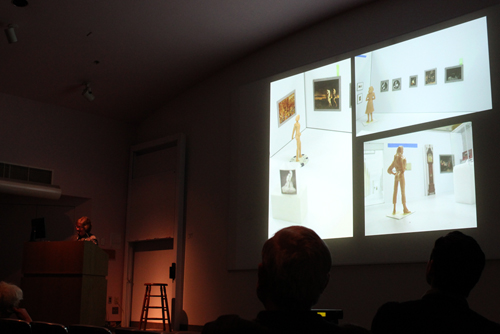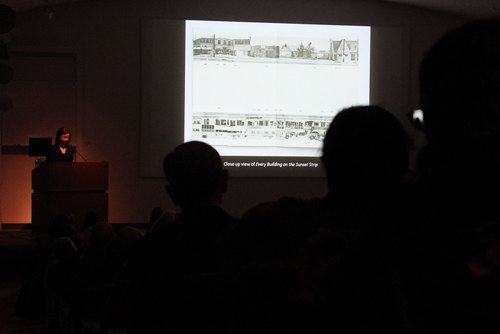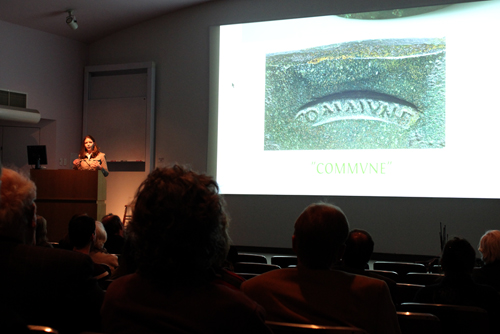Last Wednesday, as part of our In-Sight Evening lecture series, curators gave us a second peek into the planning process for exhibiting our collections in our new facility.
Assistant curator Lisa Anderson opened the event with a presentation on a massive project she is undertaking to catalogue about 1,300 ancient bronze objects in our collection. While only a small fraction of our bronzes will be on view in the galleries, a digital catalogue of the entire collection will be available on our website when we reopen.
Next, Harvard PhD candidate Jennifer Quick took a big chronological leap forward to the 1960s to present research from her dissertation on artist Edward Ruscha, whose accordion book Every Building on the Sunset Strip will be part of a gallery space focused on the ‘60s. Jennifer shared digital renderings of the gallery and discussed different case layouts curators are considering for displaying Ruscha’s 27-foot-long book.
Finally, curator Miriam Stewart explained how our curators are able to program galleries in a museum that does not yet exist. The answer? With models of museum galleries built to scale and complete with miniature art objects. Miriam also shared some of the thinking behind the installation of the Pre-Raphaelite gallery, which includes objects that resonate with themes of creation, death, and mythology.
One of the most exciting things we learned is that the planning of our gallery installations continues to evolve. We can’t wait to see the final configurations when we open our doors in fall 2014.
See images from the evening on Flickr.
Read about the first lecture in the Preparing for the New Harvard Art Museums series.





